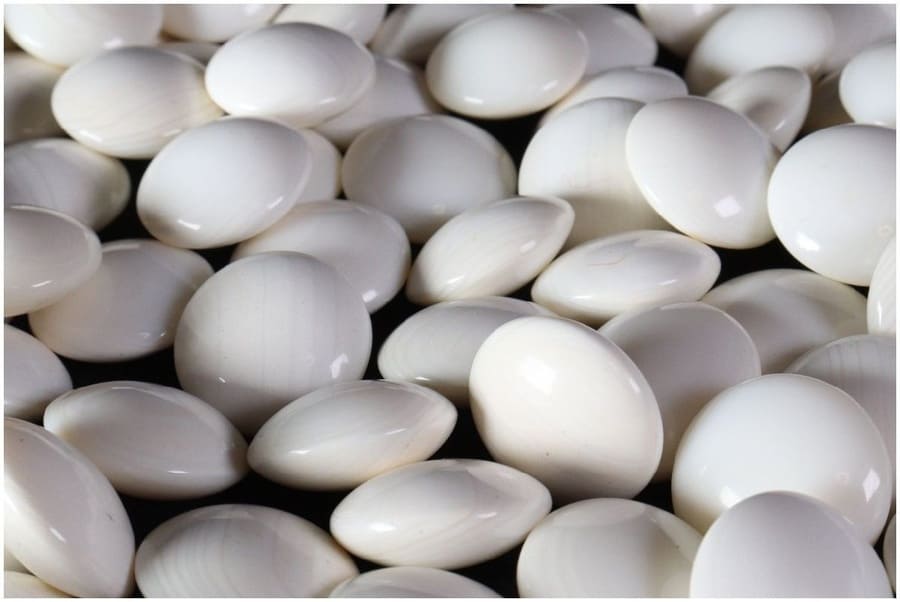Goishi
Go stones
Go stones, the essential pieces used to play the game, come in two main styles: biconvex (used in Japan and Korea) and single convex or flat-bottomed (used in China). They are crafted from a variety of materials, each offering a unique feel and aesthetic. Interestingly, black stones are slightly larger than white ones to compensate for visual perception differences, ensuring a balanced playing experience.
Standard stone sizes are 21.9mm for white stones and 22.2mm for black stones, with thickness typically ranging from 4mm to 10mm.
Materials and Craftsmanship
Traditional Japanese Go stones are highly prized and made from natural materials. Black stones are crafted from slate, while white stones are made from clamshells. The clamshells used for these stones typically come from species like Meretrix lusoria (hamaguri) or Tridacna gigas, though the latter is now critically endangered, making high-quality shell stones increasingly rare.

For modern players, glass stones are the most common choice, offering a balance of affordability, durability, and a satisfying feel. Plastic stones are lightweight and inexpensive, making them ideal for beginners, though they lack the weight and elegance of traditional materials. High-end sets may feature ceramic or even precious stones like jade or quartz, especially in China, where flat-bottomed Yunzi (云子) stones are popular.
In high-level tournaments, traditional slate and shell stones are often used, prized for their beauty and craftsmanship. For everyday play, glass stones are the preferred choice due to their durability and affordability. Plastic and ceramic stones are more common among beginners and casual players.
While modern Go stones come in a variety of colors, competitive play still adheres to the classic black-and-white format, preserving the timeless elegance of the game.